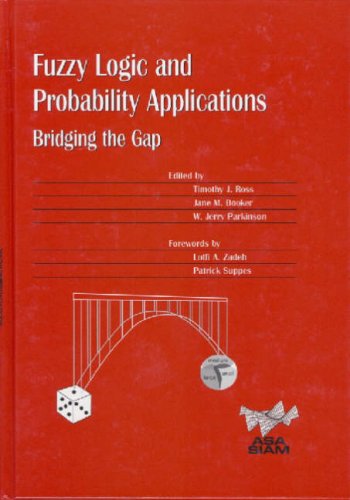

Most ebook files are in PDF format, so you can easily read them using various software such as Foxit Reader or directly on the Google Chrome browser.
Some ebook files are released by publishers in other formats such as .awz, .mobi, .epub, .fb2, etc. You may need to install specific software to read these formats on mobile/PC, such as Calibre.
Please read the tutorial at this link: https://ebookbell.com/faq
We offer FREE conversion to the popular formats you request; however, this may take some time. Therefore, right after payment, please email us, and we will try to provide the service as quickly as possible.
For some exceptional file formats or broken links (if any), please refrain from opening any disputes. Instead, email us first, and we will try to assist within a maximum of 6 hours.
EbookBell Team

4.1
100 reviewsFuzzy Logic and Probability Applications: Bridging the Gap makes an honest effort to show both the shortcomings and benefits of each technique, and even demonstrates useful combinations of the two. It provides clear descriptions of both fuzzy logic and probability, as well as the theoretical background, examples, and applications from both fields, making it a useful hands-on workbook for members of both camps. It contains enough theory and references to fundamental work to provide firm ground for both engineers and scientists at the undergraduate level and above. Readers should have a familiarity with mathematics through calculus.
Use of this book is not restricted to a specific course or application. It can be used in teaching probability, fuzzy logic, general problem solving, or in any course in which probability and fuzzy logic are not normally taught together. It has applications in control theory and artificial intelligence, knowledge acquisition/management, and risk/reliability analysis.
Contents Foreword by Lotfi A. Zadeh; Foreword by Patrick Suppes; Preface; Part I: Fundamentals; Chapter 1: Introduction; Chapter 2: Fuzzy Set Theory, Fuzzy Logic, and Fuzzy Systems; Chapter 3: Probability Theory; Chapter 4: Bayesian Methods; Chapter 5: Considerations for Using Fuzzy Set Theory and Probability Theory; Chapter 6: Guidelines for Eliciting Expert Judgment as Probabilities or Fuzzy Logic; Part II: Applications; Chapter 7: Image Enhancement: Probability Versus Fuzzy Expert Systems; Chapter 8: Engineering Process Control; Chapter 9: Structural Safety Analysis: A Combined Fuzzy and Probability Approach; Chapter 10: Aircraft Integrity and Reliability; Chapter 11: Auto Reliability Project; Chapter 12: Control Charts for Statistical Process Control; Chapter 13: Fault Tree Logic Models; Chapter 14: Uncertainty Distributions Using Fuzzy Logic; Chapter 15: Signal Validation Using Bayesian Belief Networks and Fuzzy Logic; Index.